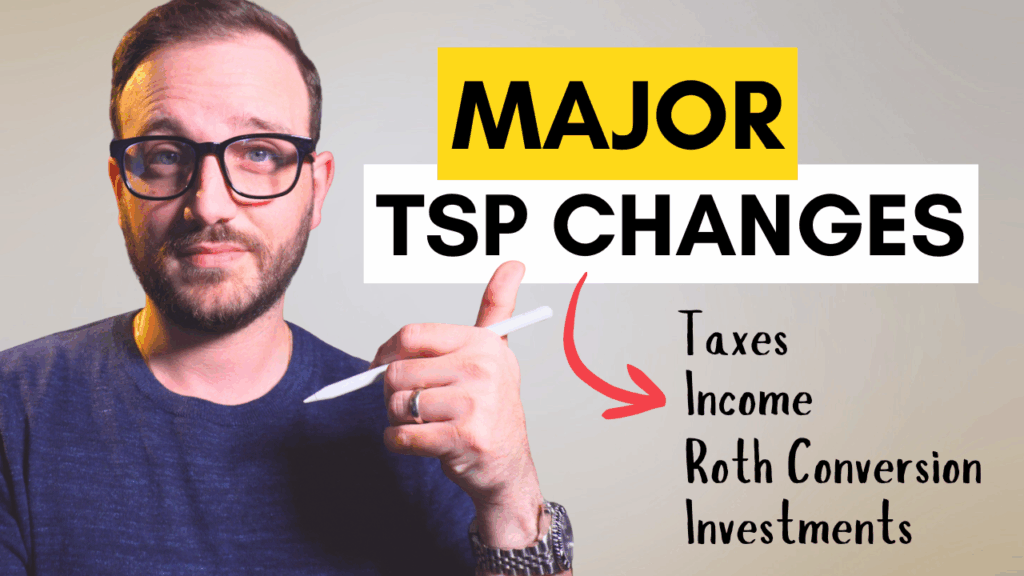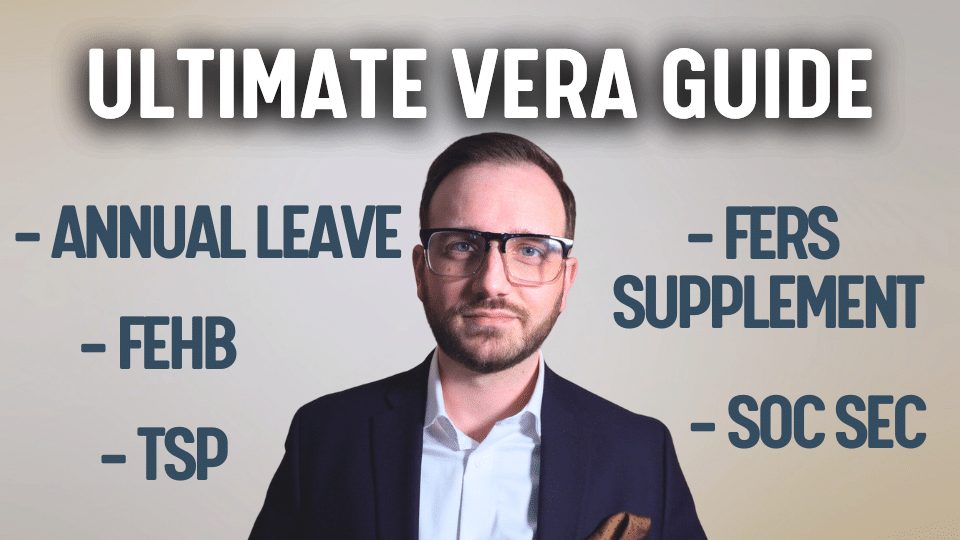SECURE Act 2.0 | Important retirement plan changes
The Secure Act 2.0 was signed as law at the end of 2022. This law brings several changes in the way that you should be planning for your retirement. There were dozens of provisions introduced, but we’ll cover some of the most important to federal employees to help them plan a better retirement.
A few years ago, the Secure Act was created and made a lot of changes to how retirees were planning. One of the biggest changes was to the RMD age and how beneficiaries of retirement assets had to treat their accounts.
Now the second iteration of this bill is the SECURE Act 2.0, and it creates even more changes to the way you need to plan for retirement.
Whenever there are sweeping laws like this, there is usually a period of time during which law makers have to clarify the legislation. We’re still seeing this with the original SECURE Act and expect it to be the case for 2.0
So, with all changes discussed, understand that things are a bit fluid right now since it’s a brand-new law. Even the TSP’s website has notices that they are monitoring how this new bill will impact the TSP and what the TSP board (and other retirement plan administrators) will need to do to adjust.
Required Minimum Distributions
The first big change comes to RMDs. The original Secure Act pushed RMDs from age 70.5 to age 72. The Secure Act 2.0 changes the RMD rule even further.
The new rule immediately pushes RMDs out to age 73, and if you were born in 1960 or later, it makes your RMDs start at age 75.
Now if you were already 72 or older in 2022, then that means you fell under the older rule and had your first RMD, or possibly have already been taking RMDs because you started under 70.5 before the Secure Act was even a law. Here’s how to easily remember it:
Born 1950: RMD age is 72, or 70.5 if taking it prior to the original SECURE Act.
Born 1951 -1959: RMD age is 73
Born 1960 or later: RMD age is 75
The obvious result is that retirees have a few more years until they must take minimum distributions. But there are also some serious tax planning implications of which to be aware.
When you first retire, you have what we call a “Tax Planning Window”. This window is the years between when you retire and when you have to take out RMDs. Watch the video to see an illustrated example of how it works.
This period of time can be a golden planning opportunity. When you’re working, your income is high. Then when your RMDs start, your income will be high again depending on how big your traditional retirement accounts are.
Between those years, you have an opportunity of living on after-tax money, like savings or non-retirement accounts, which means your tax bracket could be substantially lower for a few years. This can help you save significant amounts of taxes over your retirement.
Federal employees should understand that their FERS pension will be taxable just like your salary, so when RMDs start later down the line, you might be forced to pay that much more in taxes.
So, the Secure Act 2.0 extends this Tax Planning Window and gives you more time to implement strategies like Roth conversions and various other effective tax strategies to help minimize your overall lifetime tax liability.
RMD Penalty Reductions
Penalties for missing RMDs were among the highest penalties the IRS imposes. If you forget to take a $20K RMD—for very simple reasons like you forgot, or thought your spouse was handling it, or your custodian—the penalties were 50% of the RMD amount, meaning you owe a $10K for your oversight. Ouch.
The new rule reduces that penalty to 25% and even further to 10% if you correct it within a timely manner, and they provide those parameters defining “timely manner”.
Changes to Roth accounts
Of note, many people were worried that the backdoor Roth IRA would be eliminated. This is something that has been on the chop block several times here in DC, and I was glad to see that it remains a strategy. The original bill had language that would have removed several Roth provisions.
It also allows people who are self-employed the option of created a Roth SEP and Roth Simple IRAs. Some retired feds continue to earn an income consulting or on a part time basis. This law expands your ability to save money in tax-free growth accounts. Otherwise, this Roth change does not impact federal employees much beyond the backdoor Roth IRA.
Roth College Savings
This is perhaps one of my favorite changes. Many families that want to help pay for their kids’ educations frequently used 529 accounts. The problem with 529 accounts is that if the beneficiary didn’t need the money because maybe they received a scholarship, those funds had to be transferred to another family member to be used for education or be penalized 10% if used for non-qualified purposes.
The SECURE Act 2.0 allows unused 529 account funds to be transferred into a Roth IRA in the name of that beneficiary so that it can continue to grow tax-free for their benefit. There are some important rules to remember.
The regular Roth IRA contribution limits still apply. You can only transfer up to the annual limit into the Roth IRA, so you can’t move the entire unused 529 account into a Roth IRA. There is also a $35,000 lifetime limit for this transfer.
Additionally, the designated beneficiary must have “earned income” in order to qualify for the transfer, just like the standard IRA contribution rule, but the income limitation rules of earning too much does not apply.
I’m a big advocate of creating Roth for your children when they’re young, and this is yet another way to get money inside Roth IRAs for them.
Spousal Inheritance Options
This specific portion of the bill does not come into effect until 2024. In the past, if you were married and your spouse passes away, you had the option of either taking that IRA and making it your own or making that an Inherited IRA and taking RMDs under your own expected lifestyle.
Secure Act 2.0 changed this and is especially helpful if there is an age gap between the two spouses.
Under the new rules, you can still elect to move it into your own retirement account and be subject to your own RMD rules. But you can also elect to adopt the deceased spouse’s age for RMD purposes when it is beneficial to do so. By doing this, the RMD rules apply as if your spouse were still here. Watch the video to see an illustrated example of how it works.
Let’s look at an example:
A 70-year-old has $1M in Traditional retirement assets and is married to a 65-year-old who has $900K in Traditional retirement assets.
The 65-year-old spouse tragically passes away. Ordinarily, the 70-year-old would take the retirement assets of their late spouse in their name and start RMDs on the full $1.9M once they turn 73 (formally 72).
However, this new rule allows them to apply the RMD rules of their late spouse. When the 70-year-old turns 73, their late spouse would have been 68 years old if they were still alive.
So, upon turning 73, the RMDs would instead be only on the older spouse’s $1M balance, excluding the $900K balance from their late spouse for another full five years before the $900K is subject to RMDs.
This pushes back the time until all of the money will be subject to RMDs. This creates even greater tax planning opportunities for someone in this position.
IRA Catch-up Contributions
Historically, IRA catch-up contributions were generally a flat $1,000. The new rule changed the catch-up to be index to inflation in incremental of $100. This means that if you’re 50 or older, you will have greater opportunities to save more into tax-preferred vehicles.
The point to remember here is that you’ll need to check what the official catch-up amount will be for each year, as it is no longer a fixed dollar amount. The amount will change with inflation, and you need to avoid unintended over/under contributing.
TSP Factors
The new rule introduced removing RMDs for Roth retirement accounts. That’s right, ERISA retirement plans will no longer include the Roth portion in their RMD calculation. This is long overdue. I’ve long been a critic of this feature in many retirement accounts so it’s nice to see it finally come into consideration. The previous RMD rules would include Roth TSP balances in the RMD calculation. The distribution could still occur from the Traditional TSP, but it was unreasonable to include the Roth balance in overall calculation.
The new law also allows for work-retirement account participants to elect that matching contributions be put into the Roth component. This does mean that participants will pay income tax on the additional matching contributions in the same year, so careful planning is needed.
Many retirement accounts and plan administrators will need to implement these changes in their retirement accounts, so this is a change that will be progressive depending on whether you or your spouse are still a fed or are in the private sector.
Additionally, starting in 2024 the rule is written that anyone making over $145K and making catch-up contributions ($7,500 for 2023, TBD for 2024), that portion will need to be allocated towards the Roth.
Then in 2025, catch-up contributions limits will increase for participants 60 or older. Starting at 60, your catch-up contribution would be the higher of $10,000, or 150% of the current catch-up contribution limit ($7,500 in 2023, so $11,250).
Going back to the earlier point, if your income is higher than $145K, that higher catch-up contribution would be forced to go into the Roth, and you would owe ordinary income tax on that full amount that year.
This law brings many changes, and families will need to consider each and how it impacts their retirement plans. Some changes are straightforward, others have overlapping impact on various areas of their financial picture. Make sure you understand how the rules work and how they influence your own economic decisions, because it’s not just your money, it’s your future.



